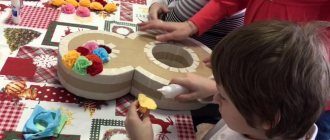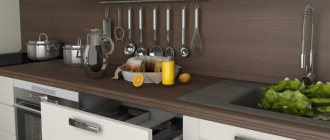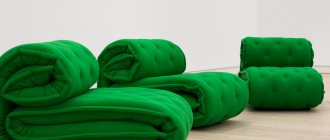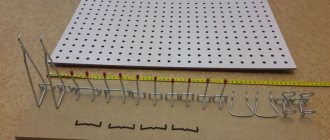Napkin holders in restaurants and at home
So-called napkin dispensers, or rather their more expensive versions, offer additional functionality. For example, folded napkins could be encased in a tight metal casing that would allow users to remove only one napkin each time they touch the container—a type of device commonly found in bars, cafes, and various public eateries that are not looking to save money on food items. small details.
Perhaps this kind of stylized napkin holders have a simpler, and often more aesthetic, analogue. This type, designed to hold napkins, is a common item for households and, for example, classrooms.
Such models may have separate holes for napkins and may have a special design. These types of items may even be made from sterling silver and date back to at least Edwardian times, hence they are popular among antique enthusiasts and can be found in special shops dedicated to those times.
Origin of the napkin holder
Napkin holders in the modern sense are a relatively new phenomenon. In order to better understand the moment at which they were introduced and integrated into society, appearing in every restaurant, you need to understand when napkins appeared on festive and simple dinner tables.
It is believed that leaves were originally used as napkins. Fig tree leaves. One can guess that since we are talking about just leaves, and not about a well-thought-out sophisticated device, then this was a very long time ago. Even before our era. This was the case in Ancient Greece. Over time, of course, people began to come up with better ideas. In Ancient Rome, instead of napkins, they simply used the edge of a tablecloth or shirt. Using a piece of tablecloth in this matter was even considered a rule of good form.
Napkins were first made from paper only in the early 1900s, in Japan. They were made by softening paper. Creating napkins in this way surprised people from other countries, because paper at that time was still quite expensive.
However, after some time, such production was popularized and led to what we have now - the product is cheap and everyone can afford it. Cloth napkins, which had existed since Greek and Roman times, were successfully replaced by paper ones, and then a device was needed that would hold them well on the table. This is how the napkin holder appeared. In the 19th and 20th centuries, making forged napkin holders was a common task for a blacksmith.
Types of napkins for serving
It is not necessary to have a collection of fabric and paper napkins of all shapes and colors at home. Select several basic sets to match your existing dishes and tablecloth, or purchase options that are universal in color, size and material and will definitely not let you down. Special decor and designs are most often appropriate for themed celebrations: children's birthdays, New Year and Christmas, Easter.
How to decorate a holiday table simply and romantically using napkins
Material of manufacture
The first paper napkins were used in Ancient China, but the history of the familiar paper additions to the table began after the First World War. it was necessary to rationally use the remnants of cellulose fiber left over from the production of filters for gas masks. So the company released the first batch of paper napkins, which were much larger than what we were used to. Now standard paper napkins are produced with sides of 25, 35 and 45 cm.
What napkin and tablecloth to choose for plates with an oriental pattern
Fabric napkins boast an equally rich history dating back to antiquity. In medieval Europe, napkins were more like a second tablecloth, common to guests and hosts, on which they wiped their mouths and hands. With the advent of forks in the 17th century, the hygienic situation improved slightly, napkins decreased in size and became more decorative than utilitarian items.
Nowadays, fabric and linen napkins are considered a more formal option and are more often found at the holiday table, while paper napkins are part of everyday use. But the choice is by no means limited to traditional options.
How to quickly and beautifully set a table in a minimalist style
Size and shape of napkins
During festive dinners at home and in restaurants, rectangular napkins with sides measuring 30x56 cm are usually placed under the cutlery. For a modest tea table or breakfast, small napkins measuring 35x35 cm are suitable, for more formal occasions - larger options 40x40 or 50x50 cm.
Option of plain textiles for classic serving
Napkin holder in ancient times
As stated above, napkin holders appeared in the last century, and at that time blacksmiths made them. They were predominantly forged, made of iron.
Although, without a doubt, there were quite a large number of people who wanted to give the napkin holder in the house a special look that would attract the eye - and therefore there were silver, gold, and beautiful wood-carved specimens.
Napkin holder as art
There are many objects of art that perfectly reflect the style of a particular time. And such cutlery here is no exception and something that has not been changed.
Note!
Melamine sponge - how to use correctly? All the pros and cons of the miracle sponge
How to descale a kettle: vinegar, citric acid, soda, brine, soda. TOP most effective cleaning methods!
Blinds for the kitchen: how to choose, what they are, photos of new designs
Antique vintage models were an integral part of kitchens from the 1950s to the 70s. They were produced in huge quantities, and they were even made of colored plastic: sometimes they were either transparent, or quite the opposite - solid, even wooden, with painted patterns in different styles at the discretion of the master.
Now, as before, collectors are buying up such items of utensils in interesting, original, and designer variations. Today, antique luxury items are still popular among some circles of people, and therefore napkin holders with all kinds of beautiful precious stones, or openwork silver variations will definitely find their owner and owner.
Pockets
A napkin folded into pockets can accommodate cutlery and decor. Looks great at any celebration.
- Fold the napkin in four and place the loose corners up.
- Place the first corner diagonally inward, underneath you.
- Do the same with the other two corners.
- Having formed three pockets, fold both sides of the fabric to form a rectangle.
The number of folds can be reduced to allow for less intricate pocket folding in a simple style.
The role of the napkin holder in the interior
A napkin holder, without a doubt, can be a good, high-quality and worthy decoration. A special and decorated model can be a very nice detail, and sometimes even the highlight of the kitchen. But their benefits are primarily practical - they are a serving item. Such an object is usually placed in the middle or slightly to the side of the table.
There is also a relatively unpopular method of application: in the bathroom. The paper napkins in the box are easy to get and use for their intended purpose: you can quickly remove drops of water, wipe your hands, and so on. For such cases, napkin holders are used not only in bathrooms and toilets, but also in any premises in general - in school classrooms, for example.
Device substrates
One of the popular innovations in festive and everyday table settings is large mats for plates, which have replaced the traditional tablecloth. There are special names: set, placement, blotter. They cope equally well with the aesthetic and functional side of serving, making cleaning easier, especially if there are children in the house, protecting the table surface and creating an elegant atmosphere. You can find round serving napkins (standard diameter 27 cm), square, rectangular and unusual shapes, such as heart-shaped ones.
Textile backings for plates
Important: the serving napkin should extend beyond the edges of the dish by at least 2.5 cm.
Modern interiors in the style of minimalism, hi-tech or loft do not imply an abundance of textiles; tablecloths look out of place in them. Substrates made of eco-leather, glass, dense plain textiles, wood, cork, bamboo, plastic and other original materials will fit into such an interior much better. You can get several sets for daily use and special occasions.
Important: glass countertops can be cold to the touch and require high maintenance. Placement backings will protect them from scratches and stains and create a more comfortable dining experience.
Substrate options by material:
- glass and porcelain coasters. Usually used for classic holiday serving and are part of the service;
— blotters made of eco-leather. They create the impression of discreet luxury, do not slip and perfectly protect the tabletop from scratches and temperature changes. Will be appropriate in both classic and loft interiors;
- substrates made of bamboo or cork. Budget and affordable option. Goes well with the decor in the oriental spirit and eco-style;
- plastic placements. The most durable and easy to maintain option. Great for small children. Will fit organically into a modern interior. For classic, Scandinavian, ethnic and country styles, you should choose more carefully and use vinyl rugs that look like textiles.
Placement for wickerware
Select the substrates so that they match the flower vase or candlesticks on the table, using the “rule of three”, like professional decorators, and then the dining table will become the point of attraction for the entire interior.
Napkins in a napkin holder
Which napkins to use in a napkin holder? Beautifully folded napkins in a napkin holder attract attention. As you know, they differ in material: paper, fabric, asbestos... But it is clear that if disposable ones are required, then the choice will fall on paper. Paper napkins can be single-layer, two-layer or three-layer - all this determines their density.
Therefore, the more layers they have, the more effectively they absorb and absorb water, fat, food debris and other substances that they want to get rid of. Naturally, single-layer ones are the most budget-friendly and are usually a daily option.
Also, if you want to choose something more original, you can choose colored napkins, or those with some unusual but attractive pattern. The dyes used in production are natural, so everything is safe. In addition, their size plays an important role. Standard – 35 by 35 centimeters. Of course, it may vary. It is better to choose what is most convenient and to your liking; although, as a rule, their size does not play a critical role - unless you take them not for a napkin holder, but for origami, but this is a different case.
Rules for using napkins according to etiquette
It’s not just the owners who need to properly arrange napkins and dishes when serving. If guests do not want to lose face, it is worth asking about the rules of etiquette in advance.
How to use cloth napkins according to etiquette
Rules for handling cloth napkins
A cloth napkin is designed to protect clothes from crumbs and drops; you can use it to blot slightly stained lips or fingers after eating. Etiquette prohibits wiping glasses, a phone, lipstick, sweat, or visibly soiled hands with it. For all these cases, it is better to use a paper product.
How to quickly set a table in Scandinavian style
Rules for using textile napkins according to etiquette:
- The folded napkin is taken into a pinch and gently shaken away from the dishes. This is the signal to start the meal. In a home environment, the hostess (or the owner in her absence) does this first; in a restaurant, it is the woman. If there are only men at the table, the inviting party takes the napkins first. In a restaurant, the napkins are not touched until the first course is served, even if the order has already been placed and you started with an aperitif.
- The napkin is folded in half and placed on your knees with the open edge facing you. Under no circumstances should a napkin be tucked into the collar; this tradition is outdated.
- While eating, wipe your fingers with the half of the napkin lying on top, without removing it from your lap.
- If you need to blot your lips, bend the first layer of tissue of the napkin by 5-7 cm, lift it towards your face in an unfolded form, holding it by the fold. Then return the product to your lap with the clean part down.
- If a cloth napkin falls on the floor, they do not pick it up, but ask the hostess or waiter for a new one.
- If you need to leave the table for a while, the napkin should be placed on the chair. This is a sign that the guest will return to the table.
- When the meal is finished, the napkin is taken from the center and placed to the left of the plate.
How to arrange flowers for serving in several small vases
How to fold napkins in it?
How to fold napkins in a napkin holder? There are quite a few interesting ways to fold napkins - sometimes even without a napkin holder, and it turns out really nice to look at. But two simple options will be taken for consideration, in which the napkin holder still plays its role.
Note!
Spatulas for the kitchen - which one to choose? Silicone, metal or ceramic? TOP 110 photos of new products for the kitchen
How to wash a microwave: the best ways to quickly clean a dirty microwave with your own hands
What temperature should the refrigerator be: setting the temperature mode + rating of the best models of 2021
fan
The classic version of the layout is a fan. It is absolutely versatile and looks beautiful at the same time.
Instructions:
- Fold each napkin diagonally without straightening the squares. You should get a triangle.
- Fold the triangles, making a shift of about 1 cm, on top of each other.
- Once the circle is complete, place the fan in the napkin holder.
Christmas tree
A napkin folded like a Christmas tree will look harmonious on the New Year's table. The method may seem difficult, but it does not cause serious difficulties.
- Fold the canvas folded in four layers, one by one, with the corners up.
- Turn the workpiece over, folding it into a diamond shape.
- Tuck each corner under the previous layer.
These simple instructions will help you decorate the table, delighting your guests and adding variety to your table setting.
Crown
The second classic version of the layout is with a crown.
- Fold each napkin diagonally without straightening the squares. You should get a triangle.
- Place the second one on the first napkin.
- Fold all the napkins in this manner, alternating.
- Place another napkin on the center on each side, wide side down.
- Place the crown in the napkin holder.
As you can see, folding napkins into a napkin holder beautifully is not difficult.
Royal lily
A slightly more intricate, but stylish option using a napkin ring. It will require thick or starched material.
- Fold the square as shown in the photo.
- Connect the corners to form an isosceles triangle.
- Connect its lower corners at the top to form a rhombus.
- Bend the “petals” and thread the ring through.
Buying a napkin holder
Buying a napkin holder in the age of the Internet, when all prices and materials are in the palm of your hand, is not a problem. It’s enough to compare prices online or walk to the nearest store and ask the sellers. Buying a napkin holder is simple and completely inexpensive.
If a person has no reason to chase the old antique version, then such a table setting item will cost mere pennies. However, vintage options are not that expensive.
Summarizing
Before setting the table, stock up on napkins. Let there be more of them than expected. This will save you from various unforeseen situations. Place them in a stand so that the guest can easily reach it at the right time. Do not stuff tightly into the napkin holder. Properly place the tissue container close to the person.
Don't choose complex patterns if you are a beginner. Focus on simple options.
To create original ideas, follow the step-by-step instructions. This will help you make any shape. To deftly fold napkins, practice.
For serving, you can use either paper or fabric napkins.
Choose a color palette for a specific holiday. Stick to color combinations with the tablecloth. You can decorate the table setting with bright decorative accessories.
Try to place the napkin holders so that a person can easily reach the cloth at the right time.
Making a napkin holder with your own hands
It has already become clear how to fold a napkin holder beautifully, and how to buy one too. But how to make a napkin holder with your own hands? Again, a century ago such holders were made only by hand, only relatively recently the entire process was automated. A DIY napkin holder does not require extraordinary skills - unless you want to get sophisticated by processing metal and giving it a fancy shape. The item can be made from everything that is at home or from things that are on sale and do not require prohibitive attention, budget or time.
What to make a napkin holder from?
How to make a napkin holder? There are several options:
- You can consider the simplest one - from scrap materials. Sticks, toothpicks, matches, plastic bottles, colored cardboard, even pasta... The main thing is to have glue, scissors and a sense of style with you. The easiest way to make such a fake is symmetrical, but you can give room to your imagination and create different sides. This kind of work is not difficult to do, but it is a lot of fun and guarantees a new experience.
- Another option is a napkin holder made of plywood or a napkin holder made of wood. If you have basic skills in wood processing, the ability to cut it and, if desired, burn it - although simply drawing may be enough - then this option is ideal. You can experiment and create something that resembles the shape of animals or some objects.
- And the third option is to make it from metal or look like metal. It’s already clear here that you need the ability to work with steel. But if it is not there, then the same wood or available materials can be beautifully and carefully tinted with a special varnish to match a metallic or aged silver color.
Making this kind of item gives real scope for imagination, and this is understandable: napkin holders appeared not so long ago. And since they are now an indispensable item in dining establishments and kitchens, they are not going away any time soon either. This means there is plenty of time to experiment with them.











